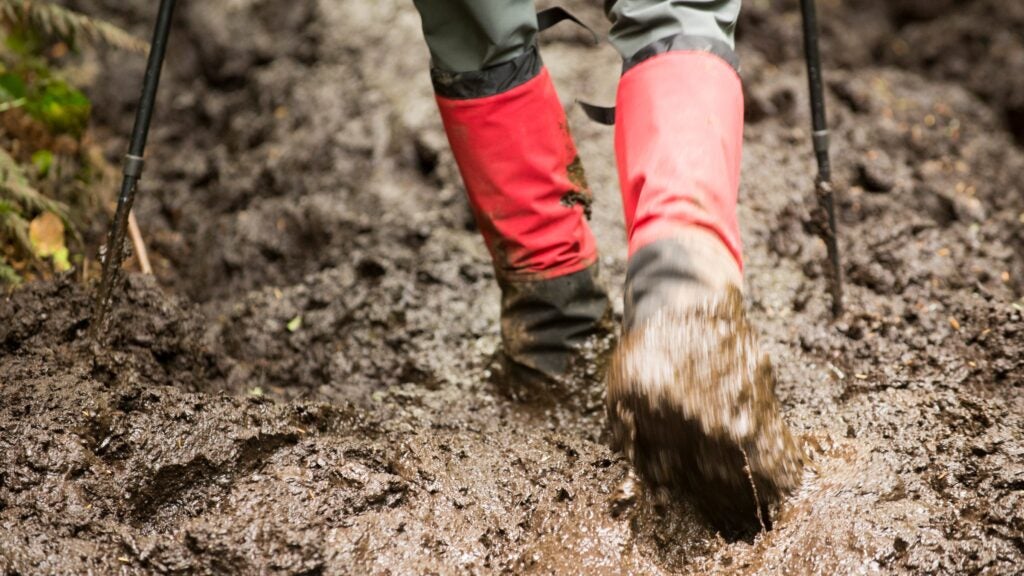Encountering mud puddles on hiking trails can evoke nostalgic memories of childhood stories, but they also present a real challenge for outdoor enthusiasts. Inspired by the timeless tale of We’re Going On A Bear Hunt, where protagonists must navigate “thick, oozy mud,” hikers face a similar dilemma today: to go through the mud or avoid it. However, avoiding mud often leads to detrimental consequences for the trails. Instead, the best advice is to approach muddy sections directly. As it turns out, taking the path through the mud helps reduce erosion and protects surrounding vegetation, ultimately preserving the trail’s integrity.
Understanding Trail Conditions
Before embarking on a hike, it’s crucial to assess trail conditions, especially during the spring when mud is most prevalent. Check the weather forecast and consult trail reports available through local hiking organizations and online blogs. Proactive resources like the Appalachian Mountain Club and the Green Mountain Club offer updates that can help determine if a trail is suitable for hiking. Some trails may even close during excessively muddy conditions to preserve the area.
Choosing the Right Trails
When possible, select trails that are less prone to mud accumulation. Hiking on dry days and avoiding low-lying areas can significantly reduce the likelihood of encountering muddy obstacles. South-facing and rocky trails tend to dry out faster and may provide a smoother experience during wet months. Recognizing terrain types and staying informed about snowmelt patterns can help hikers avoid particularly muddy paths. Emily Davenport, a program manager at AMC, recommends being strategic about the trails chosen during this time.
Utilizing Trail Maintenance Resources
Many areas have implemented trail maintenance strategies to enhance safety and accessibility during muddy seasons. Features such as bog bridges, strategically placed rocks, and logs help hikers navigate through muck while minimizing environmental impact. These constructed pathways can often make traversing muddy sections not only cleaner but safer. Understanding where these resources are located along the trail can aid hikers in planning their route efficiently.
Adjusting Your Pace
Anticipating slower progress is key when dealing with muddy conditions. Prioritize a slow and careful approach to avoid slips and falls that could lead to injury. Hikers should factor in additional time to navigate through tricky sections rather than rushing through. This mindfulness not only enhances safety but also enriches the outdoor experience, allowing hikers to appreciate the beauty of their surroundings.
Gear Up for Muddy Trails
Choosing the right hiking gear is essential for tackling muddy trails effectively. Many experienced hikers designate a specific pair of shoes for muddy trekking. Waterproof boots can provide extra stability and help keep feet dry, but lightweight footwear that drains water can also suffice. Accessories like gaiters are recommended to keep debris at bay. Furthermore, having trekking poles can enhance balance and provide support as you navigate through slushy terrain. It’s advisable to pack extra socks in case of accidental splashes.
Planning for Post-Hike Cleanup
A thoughtful cleanup plan is essential after hiking through muddy conditions. Whether you prefer cleaning your boots immediately or allowing the mud to dry before removing it, establishing a system in advance will make the process smoother. For post-hike travel, consider using a container to hold muddy items in your vehicle to avoid mess. Experts recommend keeping a spare pair of shoes handy in the car to ensure a more comfortable ride home.
Stay Vigilant About Changing Conditions
Even on seemingly dry days, trail conditions can change rapidly, particularly due to snowmelt or unexpected rain. Just because the trailhead appears dry doesn’t guarantee that the entire path will be free from mud. Hikers should remain observant and adaptable, adjusting their plans as needed. In some cases, turning back when faced with inaccessible mud is a wise decision. Mud season serves as a reminder to respect nature and stay prepared for varied conditions.
By heeding the advice from organizations like AMC and GMC and embracing the potential for mud on the trails, hikers can ensure a more enjoyable and safe outdoor experience. With proper preparation and mindfulness, exploring muddy trails can be a rewarding venture that connects us to nature while preserving the beauty of our hiking landscapes.
